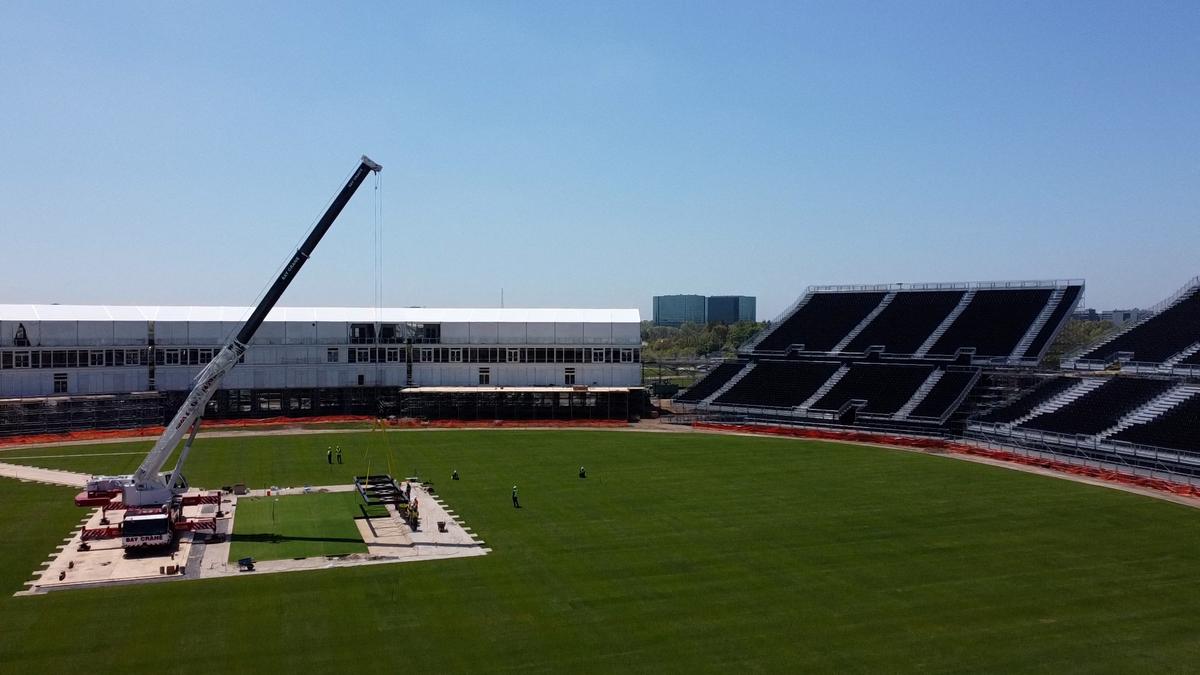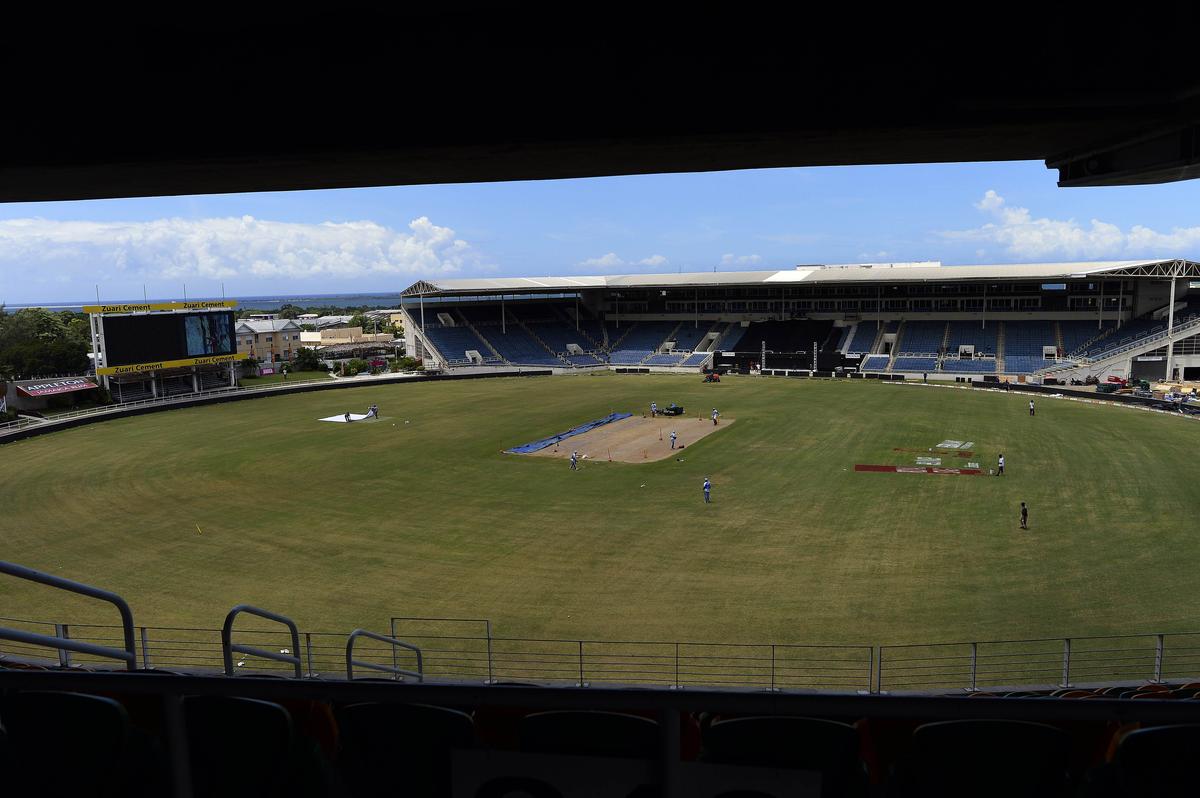On November 17, 2023, the International Cricket Council (ICC) signed a contract with Nassau County to host eight matches of the T20 World Cup at a temporary stadium in Eisenhower Park, located on the outskirts of New York City. Work on the site commenced on January 8 this year, with construction beginning on February 18, leaving just over 100 days before the first World Cup warm-up match scheduled for June 1.
Less than two weeks later, on Thursday, as the Group A game between India and co-host USA concluded, the Nassau County International Cricket Stadium, built for $30 million, had fulfilled its purpose.
More than 34,000 fans had squeezed into the stadium to watch the most anticipated match of the T20 Cricket World Cup: India versus Pakistan – the largest at an international cricket match in the United States. Despite the excitement, the drop-in pitches, created specifically for the tournament, faced heavy criticism due to a series of low scores in the opening matches. Additionally, there were complaints about minimal marketing, high prices, and inadequate facilities at the venue.
ALSO READ: ICC issues statement on Nassau pitch after low-scoring matches
Positive step
Nevertheless, tournament director Fawwaz Baksh remains optimistic about the progress cricket has made in this new market. “It’s a temporary facility, and that was always the plan. While the ground was constructed in record time, it had taken years of planning to reach this stage. The construction was completed within four months because it’s a temporary facility; building too early would mean it would sit unused,” Baksh told Sportstar.
He added, “Although the ground is temporary, some elements are not. The drop-in pitches will remain in the USA and be used at future cricket venues, allowing clubs and communities to continue playing cricket on a quality field.”
The USA is co-hosting this T20 World Cup with West Indies. The 2024 event is the third time a men’s World Cup is being held here and the first in 14 years. The Caribbean previously hosted the 2007 ODI World Cup and the 2010 World T20. There are six nations hosting events across the Caribbean — Barbados, Guyana, Trinidad, St Lucia, St Vincent and Antigua.

An aerial photo of the 34,000-capacity Nassau County International Cricket Stadium in Eisenhower Park near New York which features drop-in pitches.
| Photo Credit:
AFP
An aerial photo of the 34,000-capacity Nassau County International Cricket Stadium in Eisenhower Park near New York which features drop-in pitches.
| Photo Credit:
AFP
Baksh spoke at length about the logistical and financial challenges of crisscrossing many venues. “The distance between venues in the USA is quite substantial,” Baksh said. “Moving teams around so many locations poses a significant challenge, particularly in West Indies, where commercial airline options are far fewer compared to the USA. The effects of COVID-19, though now in the past, still linger, notably in the reduced number of commercial flights available. Consequently, most of our flights within the West Indies are charter flights, while in the USA, some are commercial flights.
“This large tournament features 20 teams, each bringing a sizable contingent. Hosting such a tournament in USA for the first time and in West Indies, a beloved cricket venue, places considerable strain on our hotel and transportation systems. It is a resource-intensive endeavour, but we have managed to accommodate all the teams. Despite the challenges, the tournament has been a success so far,” he added.
Not this time for Jamaica
It is understood that all the popular cricketing destinations across the Caribbean presented bids for the World Cup, except for three: Jamaica, Grenada, and St Kitts and Nevis. Chris Gayle and Usain Bolt, the great Jamaican sprinter, serve as ambassadors for this World Cup, but that is as close as the tournament will get to Jamaica. Its omission came as a significant shock to cricket lovers in the Caribbean. However, Baksh insists that the home of Gayle and Courtney Walsh continues to be an important part of the cricketing fabric.
“When we learned we would be hosting the World Cup, we reached out to the host countries in the West Indies. All 15 cricket-playing members of the Caribbean Community (CARICOM) were given an opportunity to be involved. Jamaica, a significant part of our cricket legacy in the West Indies, was among those we approached,” Baksh said. “We encouraged the Jamaican government to bid for the tournament, as we did with other countries. Unfortunately, the Jamaican government was unable to support the tournament at that time.”

FILE PHOTO: The Sabina Park stadium in Kingston, Jamaica was not chosen as one of the venues to host the ICC T20 World Cup 2024.
| Photo Credit:
AFP
FILE PHOTO: The Sabina Park stadium in Kingston, Jamaica was not chosen as one of the venues to host the ICC T20 World Cup 2024.
| Photo Credit:
AFP
The Jamaica Observer had earlier quoted Sports Minister Olivia Grange, who explained that “it wasn’t an easy decision,” but after considering “different permutations,” the government felt that Jamaica’s cost of hosting World Cup matches would far exceed any potential benefits.
“However, we continue to collaborate with them to ensure Jamaica remains integral to West Indies cricket. We are committed to growing and strengthening the sport in Jamaica. Although they couldn’t host the World Cup this time, we have been moving our bilateral matches [3T20Is vs SA at Sabina Park before the T20 WC] there and plan to host many more cricket events in Jamaica in the future,” Baksh added.
Odd timings
The match timings have also been an inconvenience for the fans, with some games in the USA and West Indies starting, either as early as 10.30 am or as late as 8.30 pm. The less-than-ideal time difference of more than nine hours with South Asian countries has made the cricket viewing experience tedious.
But, it’s a delicate balance to grow cricket in West Indies and USA, as Baksh points out. “Cricket is a passion in West Indies, and we’ve been planning for years to use the World Cup to attract new fans and players, especially in USA, a completely new market. However, we can’t forget our cricket-loving fans worldwide, particularly in South Asia, Europe, and Australia. Most of our fans are from the eastern part of the world, and we need to keep them engaged.
“We aim to balance attracting new fans with keeping existing ones happy. In USA, many matches are scheduled in the morning to accommodate global fans, while throughout the tournament, there’s an almost 50-50 split between morning and evening matches. This scheduling strategy aims to satisfy our current fan base and attract new interest in the game.
“People generally prefer to watch cricket after a day’s work, so we try to schedule weekend matches in the mornings and evenings, allowing fans to enjoy a full day of cricket and celebrations, like we do in West Indies,” Baksh said.
With the onset of the monsoon season in the Caribbean, discussions have turned towards reserve days for knockout matches in case of weather disruptions. According to the playing conditions, there will be no reserve day for the second semifinal, unlike the first. Instead, 250 minutes of extra time will be allotted to ensure the match can be completed if there are weather interruptions.
The first semifinal in Tarouba, Trinidad, is a night game scheduled to start at 8:30 pm local time on June 26. In contrast, the second semifinal in Guyana will begin at 10:30 am local time. “If the second semifinal cannot be played in the morning, there is enough time for it to be played in the afternoon. It’s almost the same as having a reserve day, but instead of the next day, it takes place in the afternoon,” Baksh explained.
The final has a reserve day scheduled for June 30, with play starting at 10:30 pm local time. There will be a maximum of 190 minutes of extra time available on both the scheduled day and the reserve day to accommodate any weather-related delays.







